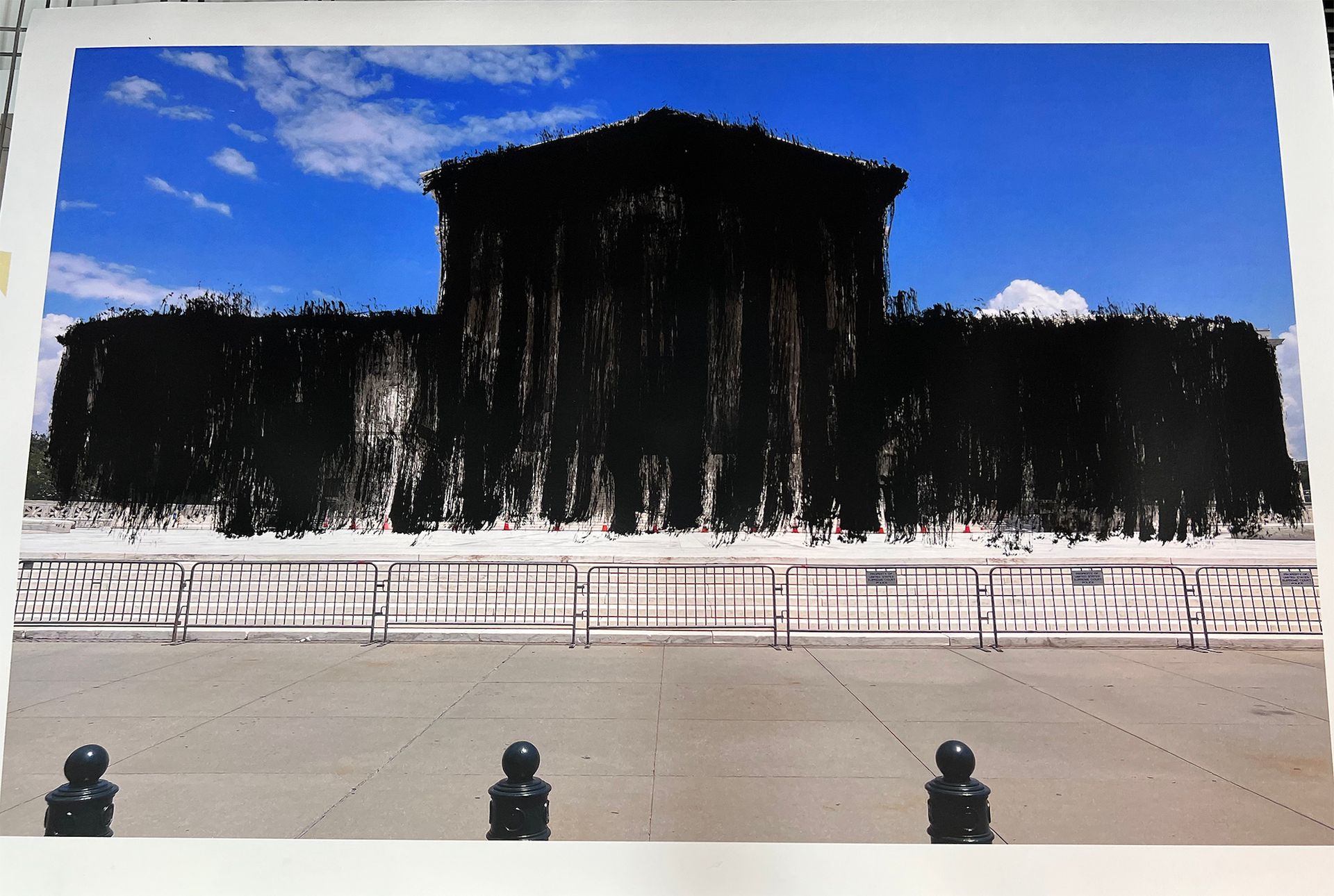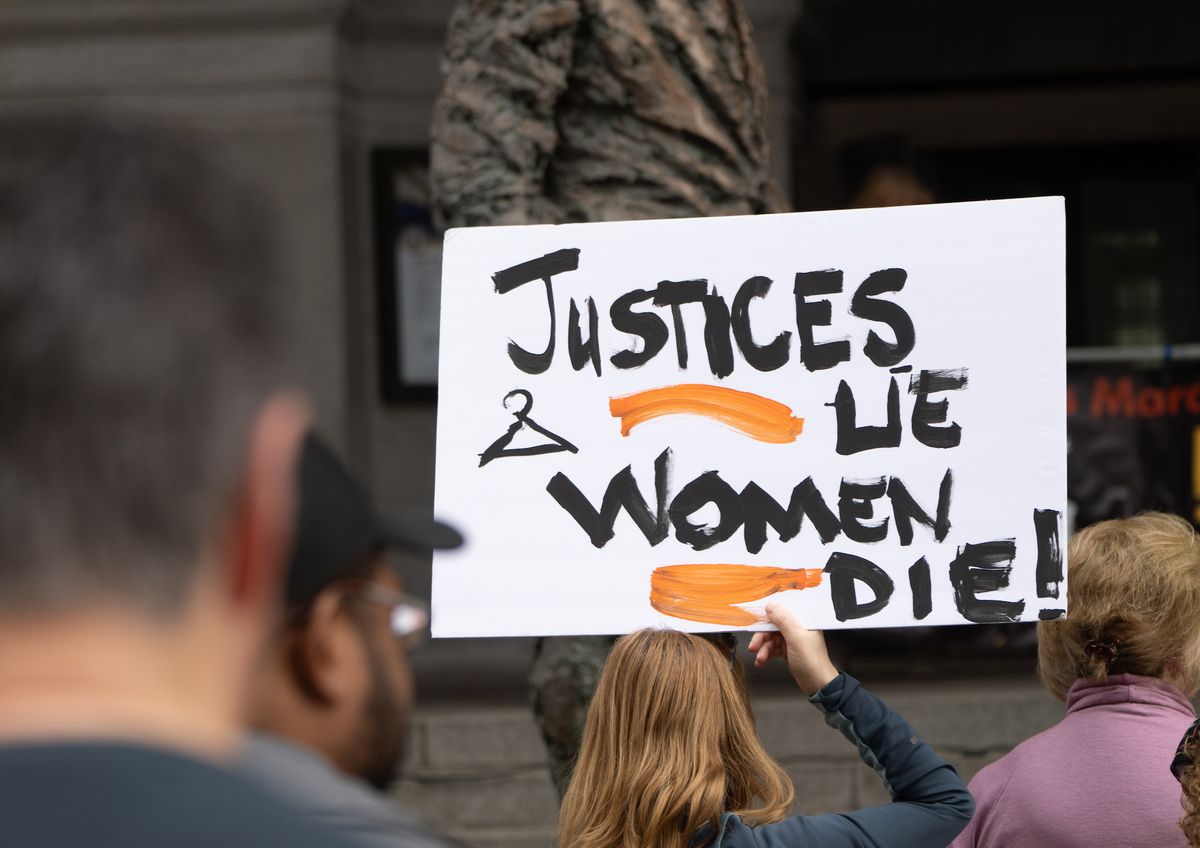Last week Politico published a leaked draft of a 98-page opinion written by Justice Samuel Alito that indicates the US Supreme Court is likely to overturn Roe v. Wade, the groundbreaking case that established abortion access as a constitutional right in 1973. The decision, if it remains unchanged from the opinion articulated in the draft document, would effectively lead to the outlawing of abortion in many states and have wider ramifications in terms of birth control and reproductive health throughout the US. The leak was met with expressions of shock and outrage by many in the art world, though the most vocal were artists.
Artist and activist Dread Scott posted numerous images, videos and statements on Instagram urging people to donate, protest and take action. “The impending Supreme Court ruling that overturned Roe v. Wade is a violent assault on women's rights. Women will be forced to become mothers and others will die. This cannot be allowed to happen. Fight like hell to make sure that this ruling never becomes law,” he wrote on Instagram.

A work in progress by Dread Scott, Obliterated Power (Supreme Court) (2022) Courtesy the artist
Scott, who creates politically engaged art, has been outspoken about the issue since last week’s leak. “It’s not surprising, but it’s totally shocking. This country’s been working overtime to enforce a sort of Christian fascist lockdown on women and women’s bodies. And they’ve been setting up the court to do this for a while and have been working on it for a couple decades now,” he tells The Art Newspaper. “It’s something that people have to fight to make sure this leaked document doesn’t actually become law. It’s truly just a violent assault on women. If this does become law, it will mean that tons of women will be forced to have children against their will, and others will die trying not to have children against their will.”
The feminist artist and activst Marilyn Minter also took to Instagram to express her outrage with this impending Supreme Court ruling. “I have a couple of reactions. The emotional one is that it’s hard to process the amount of lives that will be forced into a decision and future they don’t want because of an opinion made by old white men. If you’ve been paying attention, you knew it was coming, but that doesn’t make it easier to stomach,” she says. “My second reaction is that we need to mobilise at the polls in [the midterm elections in] November. We need to be working relentlessly to vote out every Republican we can. This is not a time to complain about Democrats—we need to work full-steam to vote in a Democrat for every open seat up and down the ballot. The Republicans need to feel the full force of the American will—they’re not going to know what hit them.”
Minter adds, “We need to codify Roe so this doesn’t happen again down the line. [The Supreme Court] has proved itself to be another partisan wing of the government. We need to protect civil rights—reproductive rights, abortion rights, health care, marriage equality, trans rights, voting rights—through congressional law rather than in the courts because the courts obviously can’t be trusted as an objective arbitrator. This will only be possible if we get more Democrats into office.”
Minter has long embraced politically engaged subject matter in her practice and sees the work she creates as part of this larger conversation about politics and justice. “I see my work as being a reflection of the times we live in. There is no separation for me,” she says. “I have worked continuously, for decades, to make sure women had the right to choose to have abortions if they wanted or needed them, and to be able to live the kinds of lives they want to live. My work celebrates being human and all of its messy and beautiful complexities.”
In addition to Minter, many other artists have made powerful works on the subject of reproductive justice, including Paula Rego, Judy Chicago, Nan Goldin, Cindy Sherman and the Guerrilla Girls. Rego’s group of drawings, The Abortion Series (1988), explores the darker side of the crimilsation of abortion.
“The rich will find a safe way but the poor women are the ones who will suffer most,” Rego says. “In the village where I grew up women would come to me for help. Mothers with large families who couldn’t feed any more children or young girls knocked up by relatives. That’s why I made my Abortion Series, to show people how it is. Show them the truth to persuade them to stop the suffering. Women were grateful to have their stories told and the Portuguese people voted to allow safe abortions. I hope the Americans are equally compassionate.”
Rego adds, “It is hard to believe that America, of all places, would go back to those oppressive and dangerous times. There has always been abortion and there always will be. Desperate women take desperate measures. If they can’t have safe legal abortions they will have unsafe backstreet ones, like I did back then. I didn’t know any college friend who hadn’t had one. My cousin died of one.”
Other artists who responded to this issue via social media included Nicole Nadeau, Deborah Kass and Calida Rawles. Barbara Kruger updated her iconic 1989 print Untitled (Your body is a battleground), which has been shared far and wide on social media since last week's news, for the cover of New York magazine to accompany an article about anti-abortion activist Marjorie Dannenfelser. Ghada Ahmer’s timely exhibition My Body, My Choice, currently on view at the London location of Goodman Gallery, takes on larger issues of bodily autonomy, cultural and sexual identity, and how attitudes about these issues are formed.
“In Western societies, there is an assumption, especially among the younger generations, that the battle of the sexes has been won, that women have been liberated, and that their rights are secure,” Amer said in a statement. “And yet, we are witnessing today a sharp regression of women’s rights and a stark rise of violence against women. However, in countries where one assumes women’s rights to be limited or absent, such as in Egypt, Iran, Afghanistan or Mexico, women of the younger generation know they have a lot to gain from fighting for those very same rights that are eroding in the West. So they are not letting down their guard and they are continuing to fight fiercely.”
While US museums have been largely silent on the issue, the Institute of Contemporary Art in San Francisco has offered its space to groups advocating for abortion access. Manhattan gallery Sargent’s Daughters launched a fundraising auction supporting the organisations Keep Our Clinics and Women’s Reproductive Rights Assistance Project.


